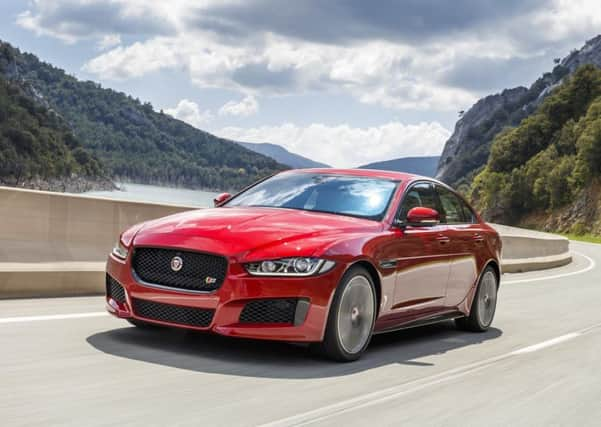Review: Jaguar XE 240 diesel


Let’s see what the year brings in Britain, with impetus from the XF Sportbrake estate car launched at the turn of the year and the E-PACE SUV/estate. The headliner this year is the all-electric I-Pace SUV, but it’s not cheap.
The cheapest Jag is the 200ps 2-litre petrol XE SE Auto, at £28,295. Most of the XE engines are four-cylinder, with 300ps being wrung out of the most potent of them. The supercharged 380ps 3-litre V6 and limited edition 600ps 5-litre V8 models take care of the “mine’s faster than your German car” nonsense. For the latter you’ll have paid £149,995 for the excitement. That’s three times more than the 380ps model. The range includes three diesel options, offering outputs of 163ps, 180ps and 240ps.
Advertisement
Hide AdAdvertisement
Hide AdJaguar’s last “small” car was the X-Type, controversially based on a Ford Mondeo (Ford then owning Jaguar and Land Rover) which was not a bad thing but not a good sales slogan when competing against German marques.
The XE has a full Jaguar pedigree, with the body and most of the chassis made with aluminium alloys for strength and lightness. It was designed by the Scot Ian Callum and is built in Solihull. At 183 inches long (4.67m) it’s shorter than Audi’s dominant A4 but matches the coveted BMW 3-Series and Mercedes-Benz C-Class. Like the latter, the Jaguar has a rear-wheel-drive core but, like them, is available with all-wheel-drive.
My factory demonstrator was the twin turbo 240ps (236.7bhp) diesel 8-speed automatic, fitted with the 4x4 system, in Portfolio trim specification. The boot badge says 25d but that’s misleading, because the car behind is a 2-litre. Camshaft Arms data includes a top speed of 155mph, 0-60 in 5.8 seconds, a 54.4mpg average and 137g of CO2. Prices start at £40,775. It was painted black and looked very smart in a black way until a few miles on wet country roads made it look rather dull and mucky.
This 240ps diesel is only available with 4x4 drive. This is not so much a deterrent, but it adds to weight, detracts from economy and takes some of the rear-drive agility out of the XE. On the other hand, if it snows or you tow or you just panic in white weather, you’ll be happy to have it. On the another hand, the XE is already fitted with a low-friction traction aid on the rear wheels to help get you moving on slippery surfaces.
It is a good looker; that Ian Callum face sets the mood. The cabin slopes nicely at the rear, but it’s a bit stubby-bottomed compared with the longer XF. That roof slope combines with the raised boot floor over the axle to limit headroom. Cabin width is good, at 58 inches door to door. Anyone nearing six foot tall may be cramped in the back. The door opening is also tight – so entry needs judgment. In the boot, that ramp in the floor is not really a problem. However, space is tight for the class and my token golf kit, proudly bearing the sticker from the Stornoway club, only fitted when crammed between the opposing corners. Folding rear seats are at extra cost.
While on the minus marks, I’d also fault it for road noise from the big wheels (Dunlop Sport Maxx) 255/35 at the back, 225/40 on the front, on 19-inch wheels. Fuel consumption, judged by the trip computer, was good, with 42mpg on my token commuter run, rising to 47mpg on open roads with no traffic interruptions. Local “shopping” duties dropped it to the high 20s.
Verdict: popular.
Which brings us to the I-PACE, this week revealed in full road-ready specification ahead of its debut at the Geneva motor show next week. Two electric motors, one for each pair of wheels, produce 394bhp and 513lb ft of torque for a 0-60mph time of 4.5 seconds. Its nominal range is 298 miles, with rapid charging giving 80 per cent battery capacity in 85 minutes (10 hours on a home charger), and an 80-mile boost in 30 minutes. Prices start at £63,495 and include an eight-year battery warranty. Servicing is every two-years or 21,000 miles. It’s fully electric, so there are no nasty engine emissions. It is built in Austria by Magna Steyr, who also build the smaller, conventionally fuelled E-PACE.
The five-seater aluminium body has a distinctive sloping back. It is an inch longer than the Jaguar XE and the absence of transmission humps makes it roomier. This platform allows a low-slung rear seat, so headroom is not affected by the sloping roof.
“We wanted to design the world’s most desirable electric vehicle and I’m confident we have met that challenge”, says Callum.